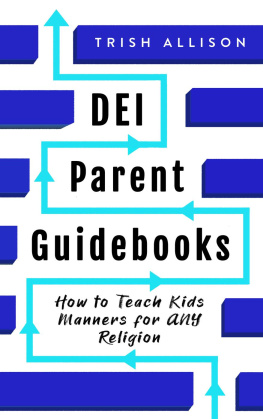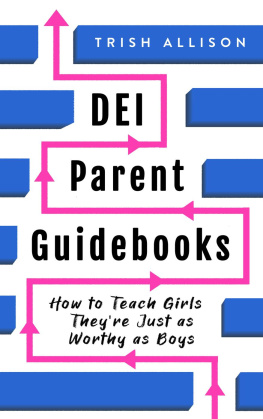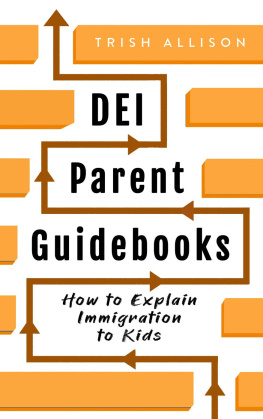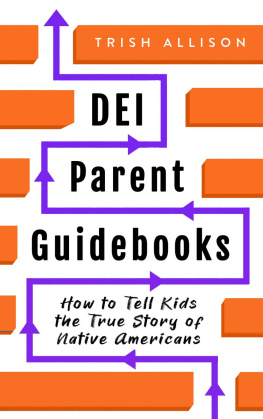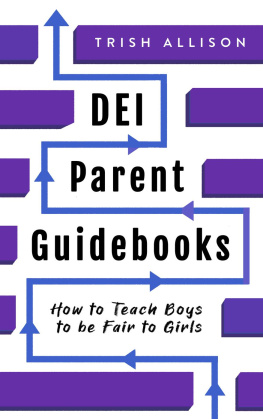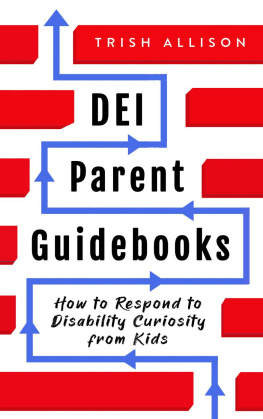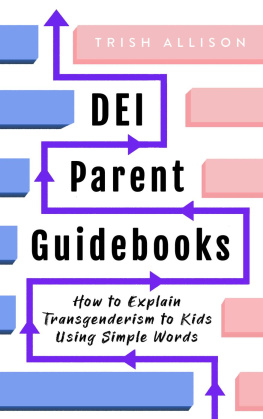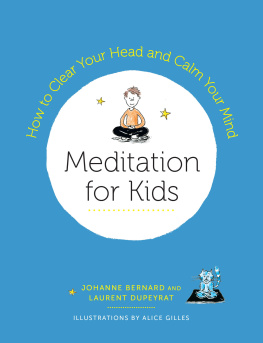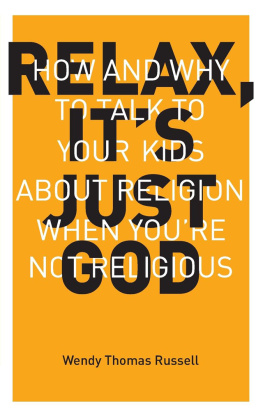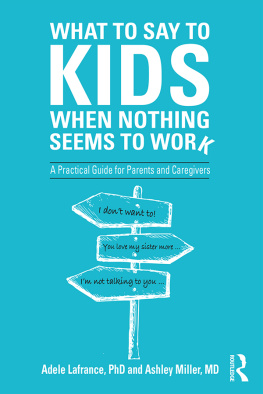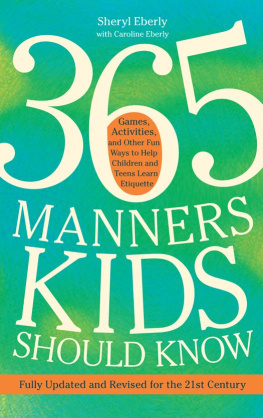How to Teach Kids Manners for ANY Religion
DEI for Parents
Trish Allison
Published by DEI for Parents, 2022.
While every precaution has been taken in the preparation of this book, the publisher assumes no responsibility for errors or omissions, or for damages resulting from the use of the information contained herein.
HOW TO TEACH KIDS MANNERS FOR ANY RELIGION
First edition. October 15, 2022.
Copyright 2022 Trish Allison.
ISBN: 978-1393859147
Written by Trish Allison.
10 9 8 7 6 5 4 3 2 1
Also by Trish Allison
DEI for Parents
How to Respond to Disability Curiosity from Kids
How to Explain Immigration to Kids
How to Explain Transgenderism to Kids Using Simple Words
How to Talk to Kids About Poverty and Homelessness
How to Teach Boys to be Fair to Girls
How to Teach Kids Manners for ANY Religion
How to Teach Girls They're Just as Worthy as Boys
How to Teach Kids to Interact with Older People
How to Teach Kids to be Kind to Gay People
How to Tell Kids the True Story of Native Americans
Watch for more at Trish Allisons site.
"The essence of all religions is one. Only their approaches are different."
- Mahatma Gandhi
T here is a wealth of religions worldwideeach one plays an enormous role in peoples lives. Regrettably, teaching tolerance and respect for those religions has been a challenge since the dawn of time.
The good news is that we have a unique opportunity at this point in history to embrace diversity values and pass sustainable respect for religious differences onto the next generation.
This guidebook boils down the importance of religious equality into understandable chunks of information so it's as easy as possible for the next generation to learn.
"Learning by chunking increases working memory capacity by reducing memory load and facilitates acquisition or recall by organizing long-term memory for information in perceived stimuli, motor sequences, or cognitive representations."
The goal is to utilize chunks of hand-picked information to help you guide your child toward a basic understanding of the importance of religious equality and how to respect other people's freedom to choose what they believe. The strategy used here is to teach the basics only , without overloading them with extraneous information.
Here are a few things to keep in mind as you're reading:
- Tips are written for parents of elementary-school children but theres a wide spectrum of maturity at every age. Some 6-year-olds are mature way beyond their years and some 10-year-olds are learning at a different pace than their peers. That said, you know your child best regarding what is and isnt appropriate.
- None of the steps are intended to be completed on a single, dictatorial occasion. The intent is to communicate the values described here on a casual basis over a period of time .
- The chapters are organized linearly, meaning it's best to read chapter 1 first and chapter 5 last. That said, if you have an immediate concern, feel free to read whichever chapter is most pertinent at the time.
- Many of the tips assume that you and your child already share a fairly solid foundation of mutual communication. The tips are doable without this foundation, but they'll be much harder to implement successfully without it.
- The most efficient method for teaching children (and adults too) is to guide, not lecture. Help your child reach their own conclusions by providing 'breadcrumbs' of information that lead them to discover concepts using their own reasoning skills. Kids learn much more efficiently when they feel like they've arrived at a concept on their own instead of believing something because that's what they've been told to believe.
- It's so important to praise kids when they do something that's aligned with whatever you taught them. Be specific with your praise and look them in the eyes when you say it. Your approval means more than you think.
- While theres no one-size-fits-all solution for raising equality-minded kids, this guidebook provides suggestions for scenarios that you can tailor to fit your own situation. The ultimate goal is to help you raise compassionate, non-biased, successful humans.
It's true that children are heavily influenced by teachers and peers, but ultimately, the values they carry with them into adulthood are learned at home. Can families successfully inspire religious equality learning and growth? Absolutely!
Chapter 1: Discover What Your Child Already Knows About Religious Equality
T his chapter appears first because it's important for you to find out what your child already knows about religious equality before you start guiding them. If you start saying things they already know, they're likely to tune out.
Maybe s/hes already well-versed in all aspects of current and past issues. Or maybe s/he knows next-to-nothing about religious equality and youre starting with a blank slate. Either way, youll never know until you get them talking and really listen to their opinion.
S tep 1. Help your child share their thoughts
The best way to get most kids to open up is to say the minimum. If you use short phrases that reassure and prompt, you're more likely to get a response. The goal here is to get your child feeling comfortable enough to express how they feel.
The other crucial element is timing. Trying to start a conversation when your child is playing a game (digital or otherwise), reading, or watching TV almost never works. They'll probably find your presence intrusive before you even start talking. Plus, you won't have their full attention.
If it's not the right time, wait. As many parents know, timing is everything, especially when you're trying to understand your child's true feelings.
If it is a good time, here are some ideas for sparking a conversation about religious equality:
Holidays . The most relatable 'religious-equality current event' for kids usually has to do with a holiday. Young kids dont really understand that there is a wide range of religious beliefs, but they do notice if a family member or friend doesn't celebrate a particular holiday the same way they do.
To start a conversation, Google the season in which a holiday occurs, followed by 'holiday religions kids.' For example, if Christmas is on its way, enter:

